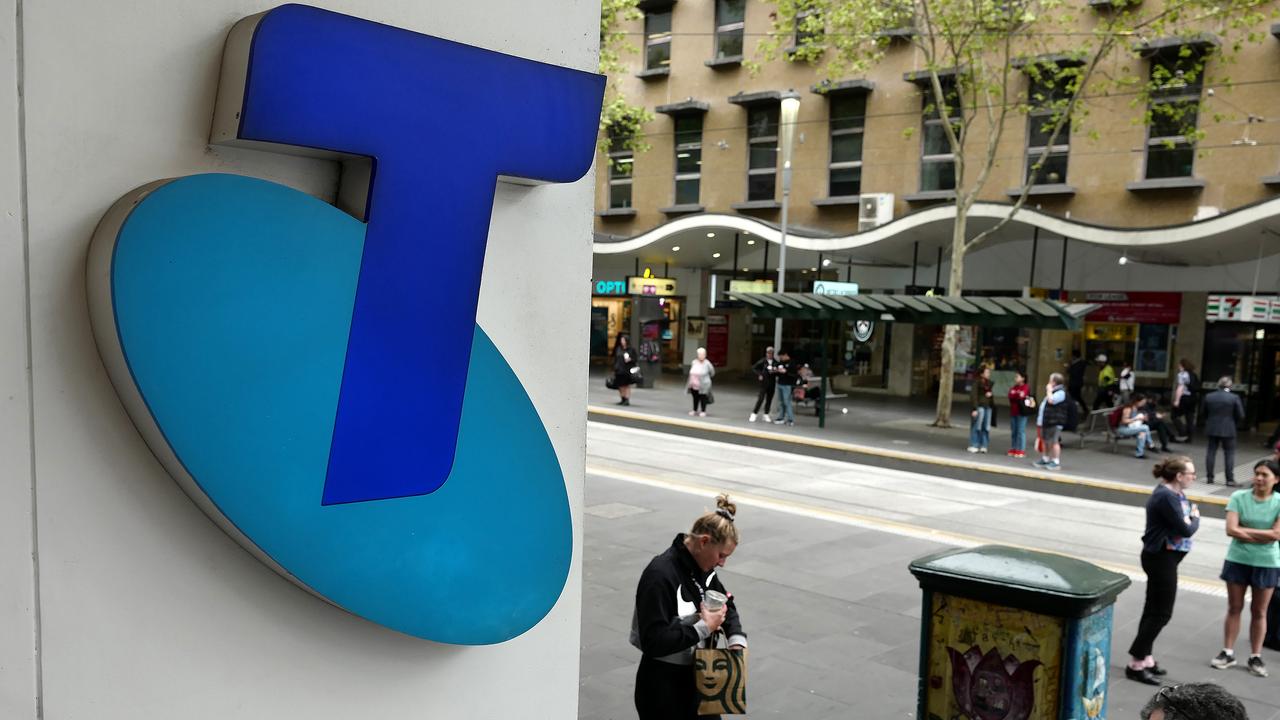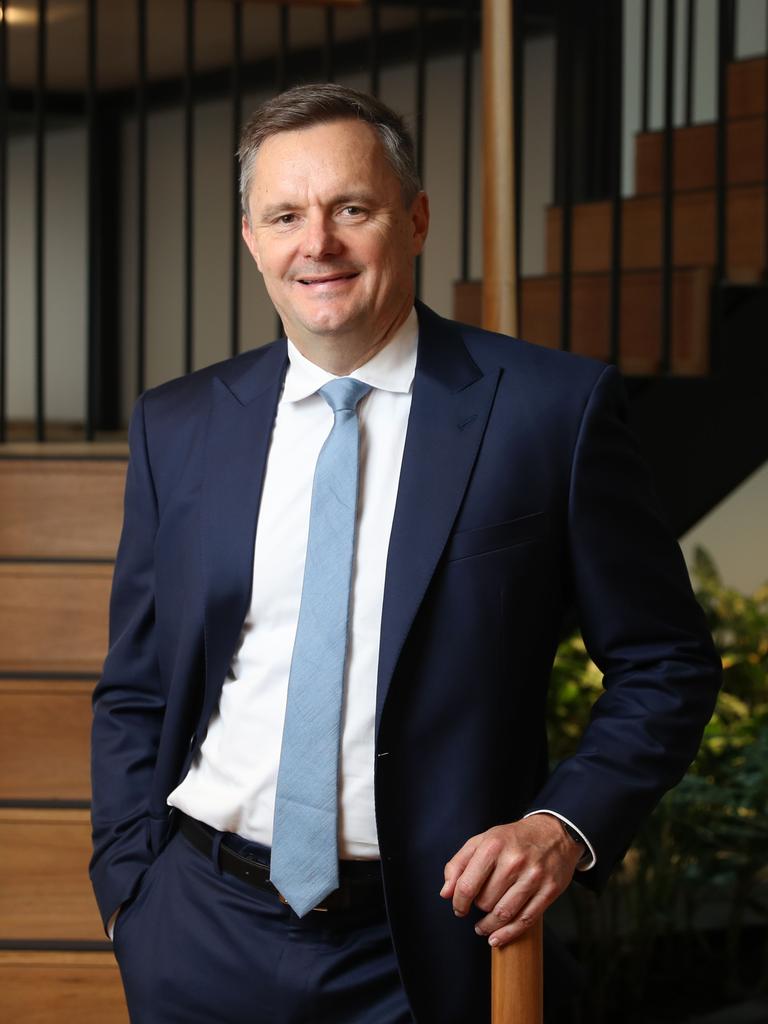Ice cream and the art of CEOs keeping it simple
Global consumer giant Unilever wants to do fewer things and to do them better. Australian business is starting to catch on.

Business
Don't miss out on the headlines from Business. Followed categories will be added to My News.
Not many people would be across the name Unilever but they would be familiar with the household brands owned by the British multinational. There’s Dove and Rexona in the bathroom, OMO in the laundry and detergents as well as food in the kitchen. Sitting in the freezer are Cornetto and Magnum ice creams that are sold under the Streets brand in Australia.
In fact, Unilever has more than 400 global brands used in nearly every corner of any house. The company is so vast it covers 190 countries, it has 130,000 employees and hundreds of factories.

The thing is, some three-quarters of Unilever’s $100bn in annual sales come from just 30 brands. That’s the huge cost of supporting 370 brands generating just 25 per cent of sales.
Growth across the entire company has been going nowhere for years. Something needed to change.
A big part of Unilever’s motivation to this week push ahead with a spin-off of its global ice cream business – through a possible $12bn demerger – is around simplification. And that’s a concept starting to really to take hold across corporate Australia.
Unilever chief executive Hein Schumacher declared he wants his sprawling company “to do fewer things, better, and with greater impact”. Spinning off ice creams will go some way to simplifying Unilever, allowing management to focus its resources on “scalable brands,” he says. The number of businesses units will drop from five to four: Personal care, beauty, home care and nutrition.
Inside Telstra, Suncorp and every major Australian bank, simplification is the mantra from the very top. It’s all about doing few things better.
There’s usually a management consultant nearby helping to push the message. Bain & Company or McKinsey & Co are among the biggest preachers of corporate simplification, although the concept is used widely. McKinsey helped pull together Telstra’s T22 strategy with former chief executive Andy Penn, and to this day ranks as one of the top Australian efforts cleaning up the business.
Untangling Telstra
Much of the work around Telstra’s mammoth multi-year restructure was around untangling the telco, including a radical reduction in the number of consumer and small business product plans from 1800 to just 20.
It took real management commitment to hack away at such a large number of legacy brands. This was part of a suite of measures now delivering nearly $3bn in annual savings – as well as sharply improved customer satisfaction.
Since more than a decade ago, Bain partners Chris Zook and James Allen have been preaching simplification to clients, telling them it’s an act of freeing up trapped resources allowing them to be redeployed to fund growth.

They argue complexity is the “silent killer” of growth, creeping in as companies expand in to new geographies or into adjacent business lines. Management teams become distracted and investments can be spread too thin to make a difference.
Instead the focus should be on the core by relentlessly building a simple, repeatable business model. Think Apple, McDonalds or Nike.
Even EV maker Tesla has been able to thrive with a focus on just four models with limited variations (although this is now has shifted up to five with the introduction of its Cybertruck SUV). Ford currently has around 22 models on sale in the US.
In Australia, the simplification journey among corporates has mostly involved the Unilever approach of selling businesses to remove complexity. Although they are often reluctant to tackle the back end.
The biggest of these was BHP’s decision to exit its oil and gas business through a $60bn merger with Woodside. This allowed BHP to focus on its portfolio of hard rock minerals and potash. South32 is a miner pulling back to the core.
Elsewhere, ANZ chief executive Shayne Elliott has sold more than 30 businesses since taking charge, although he has acquired a retail bank. Sales include wealth management, share trading and retail banking through Asia where ANZ’s footprint was subscale.
This has radically opened up a path to focus on payments in its institutional business where it has an edge. Other banks like Westpac and National Australia Bank are hacking into their technology systems and products on offer.

When Suncorp’s Steve Johnston began as chief executive nearly five years ago he put simplification as his number-one strategy. Since then he has sold wealth and was involved in the exit from life insurance.
The biggest deal so far is the $4.9bn sale of his bank to ANZ. The rationale behind this sees Suncorp putting the distraction and regulatory demands of banking behind it to become a pure-play general insurer across Australia and New Zealand.
“I firmly believe the more that we can focus the whole organisation on delivering improved insurance products – which is what we’re good at and we’ve demonstrated we’re good at it – and reduce the reliance on things that we’re less good at, the better a business we will be,” Johnston tells The Australian.
Of course, it’s not all that simple. Stripping back to the core removes the big diversification safety harness for CEOs that sees them through market downturns or changes in the competitive landscape.
And that’s the real challenge. From the vantage point of a multi-headed conglomerate like Wesfarmers, a company that mines lithium while selling hammers in Bunnings or shoes in Target, the aim is to keep evolving with its chosen markets.
-
June firms for US cuts
Influential US bond manager Michael Buchanan is currently meeting with Australian clients with a two-day meeting of the US Federal Reserve underway. Forget shares, this $570bn manager is bullish on fixed income.
Buchanan, the co-chief investment officer of the California-based fixed income heavyweight Western Asset Management, expects US cash rates to start being cut from June with two more to follow this calendar year – one in October and another in either November or December.
It’s not quite the six to seven rate cuts markets were betting on from the start of the year, but Buchanan says it’s the trend that is the market’s friend.
“It’s going to be a regime shift for the Fed and other central banks,” Buchanan says.
“The big war that the Fed and other central banks were fighting in this particular cycle, which is different than other cycles…it’s really been all about inflation. And we would argue that they have made significant progress on that front”.
His comments come as the Federal Reserve kicks off its two-day policy meeting this week. Early Thursday the US central bank kept rates at their current restrictive range of 5.25 per cent to 5.5 per cent. But US Fed officials indicated the central bank could be able to cut three times this calendar year.
In the lead up to the meeting markets had been revising their expectations around US rate cuts. There was rising optimism at the start of the year the March meeting would be the one where the cuts start to happen. US inflation is coming down, although is holding sticky at the top of the Federal Reserve’s 2 per cent band, and this has pushed back market expectations on the timing of cuts.

Even so, the shift in timing hasn’t dampened equity markets. Wall Street and other global markets have been pushing record highs in recent weeks. After a rally last year, longer dated bonds have been sold off.
Buchanan’s June call is widely supported, but not fully held, with futures markets tipping a two-in-three chance the first cut in this cycle will happen during that Fed meeting.
Australia’s Reserve Bank this week quietly moved back from its hawkish position on the cash rate to a more neutral footing. Most economists are tipping Australian cash rates, currently at 4.35 per cent, to start falling later year, possibly from September.
Buchanan is tipping a soft landing for the US economy, although the Federal Reserve will be sensitive to sudden weakness in the US jobs market.
“In our opinion the labour market does appear to be softening”.
The Federal Reserve doesn’t want high unemployment nor do they want a labour market that isn’t so tight, he says.
Despite the sell-off since the start of the year, Buchanan is overweight on the longer-end the bond market such as 10 year treasuries, which means he is betting on US inflation falling from here which is good rates and in turn, bonds.
“This is the beginning of a transition in the restrictive cycle. And there’s going to be a downshifting now, whether that’s to a more neutral policy, or whether that’s more accommodative…what we think ultimately is that it means rates in general will start to trend lower”.
johnston@theaustralian.com.au
Originally published as Ice cream and the art of CEOs keeping it simple







